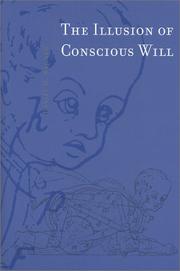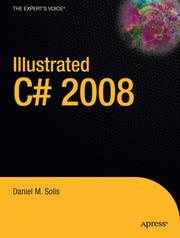| Listing 1 - 10 of 884 | << page >> |
Sort by
|
Multi
ISBN: 363130255X Year: 1996 Volume: 167 Publisher: Frankfurt am Main : Lang,
Abstract | Keywords | Export | Availability | Bookmark
 Loading...
Loading...Choose an application
- Reference Manager
- EndNote
- RefWorks (Direct export to RefWorks)
Psycholinguistics --- Langage [Psychologie du ] --- Langage et langues--Aspect psychologique --- Langage et langues--Psychologie --- Langage et psychanalyse --- Langage--Aspects psychologiques --- Langage--Psychologie --- Language and psychoanalysis --- Language--Psychological aspects --- Language--Psychology --- Langues--Psychologie --- Parole--Psychologie --- Perceptie --- Perception --- Psychanalyse et langage --- Psychoanalyse en taal --- Psychoanalysis and language --- Psycholinguistique --- Psychologie du langage --- Psychologie van de taal --- Taal en psychoanalyse --- Taal--Psychologie --- Taal--Psychologische aspecten --- Taalpsychologie --- Waarneming --- Bilingualism --- -Color --- -Perception --- Language, Psychology of --- Language and languages --- Psychology of language --- Speech --- Linguistics --- Psychology --- Thought and thinking --- Supraliminal perception --- Cognition --- Apperception --- Senses and sensation --- Chromatics --- Colour --- Chemistry --- Light --- Optics --- Colors --- Thermochromism --- Languages in contact --- Multilingualism --- Psychological aspects --- Color --- Color vision. --- Bilingualism. --- Diglossia (Linguistics). --- Deutsch --- Farbadjektiv --- Zweisprachigkeit --- Farbensehen
Multi
ISBN: 9781107015432 9781107695122 9781139058537 110701543X 1107695120 1107230233 1139058533 1139210068 1139215140 1139218239 1139221329 1139223038 1139224751 1280568879 9786613598479 9781139218238 9781139221320 661359847X 9781280568879 Year: 2012 Publisher: Cambridge ; New York : Cambridge University Press,
Abstract | Keywords | Export | Availability | Bookmark
 Loading...
Loading...Choose an application
- Reference Manager
- EndNote
- RefWorks (Direct export to RefWorks)
This book is about preferences, principally as they figure in economics. It also explores their uses in everyday language and action, how they are understood in psychology and how they figure in philosophical reflection on action and morality. The book clarifies and for the most part defends the way in which economists invoke preferences to explain, predict and assess behavior and outcomes. Hausman argues, however, that the predictions and explanations economists offer rely on theories of preference formation that are in need of further development, and he criticizes attempts to define welfare in terms of preferences and to define preferences in terms of choices or self-interest. The analysis clarifies the relations between rational choice theory and philosophical accounts of human action. The book also assembles the materials out of which models of preference formation and modification can be constructed, and it comments on how reason and emotion shape preferences.
Microeconomics --- Consumers' preferences --- Preferences (Philosophy) --- Value --- Rational choice theory --- AA / International- internationaal --- 305.6 --- 15 --- 339.320 --- Risicotheorie, speltheorie. Risicokapitaal. Beslissingsmodellen. --- Psychologie. --- Consumptie: algemeenheden. Wet van de vraag in verband met de consumptie. Consumptiebehoefte. Behoeftetheorie. --- Standard of value --- Cost --- Economics --- Exchange --- Wealth --- Prices --- Supply and demand --- Social choice --- Philosophy --- Brand preferences --- Choice (Economic theory) --- Choice of product --- Preferences, Consumers' --- Product choice --- Consumer behavior --- Consumers --- Revealed preference theory --- Psychologie --- Risicotheorie, speltheorie. Risicokapitaal. Beslissingsmodellen --- Consumptie: algemeenheden. Wet van de vraag in verband met de consumptie. Consumptiebehoefte. Behoeftetheorie --- Attitudes --- Business, Economy and Management --- Consumers' preferences. --- Value. --- Rational choice theory.
Book
ISBN: 0231050909 9780231050906 Year: 1981 Publisher: New York: Columbia university press,
Abstract | Keywords | Export | Availability | Bookmark
 Loading...
Loading...Choose an application
- Reference Manager
- EndNote
- RefWorks (Direct export to RefWorks)
Capital --- Methodology of economics --- Capital. --- Profit --- Prices. --- Interest --- Value. --- Economics. --- Economics --- Prices --- Value --- Standard of value --- Cost --- Exchange --- Wealth --- Supply and demand --- Net income --- Business --- Distribution (Economic theory) --- Finance --- Surplus (Economics) --- Surplus value --- Income --- Risk --- Commercial products --- Commodity prices --- Justum pretium --- Price theory --- Consumption (Economics) --- Costs, Industrial --- Money --- Cost and standard of living --- Wages --- Willingness to pay --- Interest and usury --- Finance charges --- Economic theory --- Political economy --- Social sciences --- Economic man --- Capital assets --- Fixed assets --- Capitalism --- Infrastructure (Economics)
Book
ISBN: 066906159X 9780669061598 Year: 1984 Publisher: Lexington (Mass.) : Lexington books,
Abstract | Keywords | Export | Availability | Bookmark
 Loading...
Loading...Choose an application
- Reference Manager
- EndNote
- RefWorks (Direct export to RefWorks)
Profit --- Corporate profits --- Statistical methods --- Statistical methods. --- AA / International- internationaal --- AT / Austria - Oostenrijk - Autriche --- CA / Canada --- DE / Germany - Duitsland - Allemagne --- FI / Finland - Finlande --- FR / France - Frankrijk --- GB / United Kingdom - Verenigd Koninkrijk - Royaume Uni --- IT / Italy - Italië - Italie --- JP / Japan - Japon --- SE / Sweden - Zweden - Suede --- US / United States of America - USA - Verenigde Staten - Etats Unis --- 339.232 --- 339.312.7 --- Inkomens en rentabiliteit in de industrie. --- Kosten en rentabiliteit van de investeringen. --- Net income --- Business --- Capital --- Distribution (Economic theory) --- Economics --- Finance --- Surplus (Economics) --- Surplus value --- Wealth --- Income --- Risk --- Corporate earnings --- Corporate net income --- Earnings (Business) --- Net income, Corporate --- Corporations --- Inkomens en rentabiliteit in de industrie --- Kosten en rentabiliteit van de investeringen --- Profit - Statistical methods --- Corporate profits - Statistical methods

ISBN: 3540190724 0387190724 3540390790 9780387190723 9783540190721 Year: 1988 Volume: 302 Publisher: Berlin: Springer,
Abstract | Keywords | Export | Availability | Bookmark
 Loading...
Loading...Choose an application
- Reference Manager
- EndNote
- RefWorks (Direct export to RefWorks)
With the proliferation of computer languages and dialects, it is important to create tools to aid in the construction of source-to-source translators. By allowing users to make use of software (or data) written for another system, these tools form an important component in the quest for software reusability. After discussing the theoretical and practical issues of attribute grammar inversion, this book demonstrates how the technique can be used to build source-to-source translators. This is done by first identifying a common canonical form in which to represent the various source languages and then writing attribute grammars from each source to the canonical form. By automatically inverting these attribute grammars one obtains translators from the canonical form back to each source language and by composing the appropriate pairs of translators one obtains source-to-source translators. To prove the feasibility of the inversion approach to source-to-source translation, it has been used to generate translators between the programming languages Pascal and C.
Programming --- 681.3*34 --- Translators (Computer programs) --- 681.3*D27 --- 681.3*D31 --- Translating programs (Computer programs) --- Computer programs --- Systems software --- Macro processors --- Computerwetenschap--?*34 --- Distribution and maintenance: corrections; documentation; enhancement; extensibility; portability; restructuring; version control (Software engineering) --- Formal definitions and theory: semantics; syntax (Programming languages)--See also {681.3*D21}; {681.3*F31}; {681.3*F32}; {681.3*F42}; {681.3*F43} --- Translators (Computer programs). --- 681.3*D31 Formal definitions and theory: semantics; syntax (Programming languages)--See also {681.3*D21}; {681.3*F31}; {681.3*F32}; {681.3*F42}; {681.3*F43} --- 681.3*D27 Distribution and maintenance: corrections; documentation; enhancement; extensibility; portability; restructuring; version control (Software engineering) --- Computer science. --- Programming Languages, Compilers, Interpreters. --- Informatics --- Science --- Translation --- Attribute Grammar --- Compiler --- Lncs
Book
ISBN: 0897663551 9780897663557 Year: 1986 Volume: 480 Publisher: New York (N.Y.): New York Academy of Sciences,
Abstract | Keywords | Export | Availability | Bookmark
 Loading...
Loading...Choose an application
- Reference Manager
- EndNote
- RefWorks (Direct export to RefWorks)
Quantum mechanics. Quantumfield theory --- $ Quantum theory(Experiments) --- $ 88KL --- $ Quantum theory of measurement --- 530.145 --- Quantum theory --- 530.145 Quantum theory

ISBN: 0262232227 0262731622 0585442738 0262285894 0262290553 9780262285896 9780585442730 9780262232227 9780262731621 Year: 2002 Publisher: Cambridge (Mass.) : MIT press,
Abstract | Keywords | Export | Availability | Bookmark
 Loading...
Loading...Choose an application
- Reference Manager
- EndNote
- RefWorks (Direct export to RefWorks)
A novel contribution to the age-old debate about free will versus determinism.Do we consciously cause our actions, or do they happen to us? Philosophers, psychologists, neuroscientists, theologians, and lawyers have long debated the existence of free will versus determinism. In this book Daniel Wegner offers a novel understanding of the issue. Like actions, he argues, the feeling of conscious will is created by the mind and brain. Yet if psychological and neural mechanisms are responsible for all human behavior, how could we have conscious will? The feeling of conscious will, Wegner shows, helps us to appreciate and remember our authorship of the things our minds and bodies do. Yes, we feel that we consciously will our actions, Wegner says, but at the same time, our actions happen to us. Although conscious will is an illusion, it serves as a guide to understanding ourselves and to developing a sense of responsibility and morality.Approaching conscious will as a topic of psychological study, Wegner examines the issue from a variety of angles. He looks at illusions of the will--those cases where people feel that they are willing an act that they are not doing or, conversely, are not willing an act that they in fact are doing. He explores conscious will in hypnosis, Ouija board spelling, automatic writing, and facilitated communication, as well as in such phenomena as spirit possession, dissociative identity disorder, and trance channeling. The result is a book that sidesteps endless debates to focus, more fruitfully, on the impact on our lives of the illusion of conscious will.
Affective and dynamic functions --- Will. --- Free will and determinism. --- #KVHB:Vrije wil --- Free will and determinism --- Will --- Cetanā --- Conation --- Volition --- Ethics --- Philosophy --- Psychology --- Self --- Compatibilism --- Determinism and free will --- Determinism and indeterminism --- Free agency --- Freedom and determinism --- Freedom of the will --- Indeterminism --- Liberty of the will --- Determinism (Philosophy) --- COGNITIVE SCIENCES/Psychology/Cognitive Psychology --- COGNITIVE SCIENCES/General --- Volonté. --- Libre arbitre.

ISBN: 1281273686 9786611273682 1430205741 1590599543 9781281273680 9781430205746 Year: 2008 Publisher: Berkeley, Calif. : Apress,
Abstract | Keywords | Export | Availability | Bookmark
 Loading...
Loading...Choose an application
- Reference Manager
- EndNote
- RefWorks (Direct export to RefWorks)
The unique, visual format of Illustrated C# 2008 has been specially created by author and teacher of development methods, Daniel Solis. The concise text, use of tables to clarify language features, frequent figures and diagrams, as well as focused code samples all combine to create a unique approach that will help you understand and get to work with C# fast. It was while teaching numerous seminars on various programming languages that the author realized the immense power that diagrams have in explaining programming language concepts. Most people learn quicker and retain information better when the material is presented in a clean, simple, visual format. To achieve this result in his book, Solis uses concise text and bulleted lists, tables to clarify and summarize language features, as well as his renowned and ubiquitous figures and diagrams. Each language feature is illustrated with a concise and focused code sample for complete clarity. Following an overview of the .NET platform and the role played by C#, you'll soon move into exploring the C# language in its entirety, including all the new C# 2008 features right down to the most complex topics involved in C#. If you're a C++ or VB programmer migrating to C# 2008, this book will be invaluable; the unique visual approach offers a far from lightweight treatment of C# 2008, so even the most experienced programmers will come away with a deeper understanding of the C# language.
C# (Computer program language) --- Information Technology --- Computer Science (Hardware & Networks) --- General and Others --- Microsoft software. --- Microsoft .NET Framework. --- Software engineering. --- Microsoft and .NET. --- Software Engineering/Programming and Operating Systems. --- Computer software engineering --- Engineering --- Computer software --- Dot Net (Software framework) --- Microsoft .NET --- Microsoft .NET software framework --- .NET Framework
Book
ISBN: 0521815525 0521894603 9780521894609 9781139000932 9780521815529 Year: 2004 Volume: *17 Publisher: Cambridge : Cambridge university press,
Abstract | Keywords | Export | Availability | Bookmark
 Loading...
Loading...Choose an application
- Reference Manager
- EndNote
- RefWorks (Direct export to RefWorks)
Sibelius, Jean --- Sibelius, Jean, --- Sibelius, I︠A︡. --- Sibelius, I︠A︡n, --- Sibelius, J. --- Sibelius, Jan, --- Sibelius, Jean Julius Christian, --- Sibelius, Johan Julius Christian, --- Сибелиус, Ян, --- Criticism and interpretation. --- Sibelius, Johan Julius Christian --- Criticism and interpretation --- 78.21.1 Sibelius --- Sibelius, Jean, - 1865-1957
Book
ISBN: 0521079101 9780521079105 Year: 1970 Volume: 617 Publisher: Cambridge: Cambridge university press,
Abstract | Keywords | Export | Availability | Bookmark
 Loading...
Loading...Choose an application
- Reference Manager
- EndNote
- RefWorks (Direct export to RefWorks)
| Listing 1 - 10 of 884 | << page >> |
Sort by
|

 Search
Search Feedback
Feedback About UniCat
About UniCat  Help
Help News
News